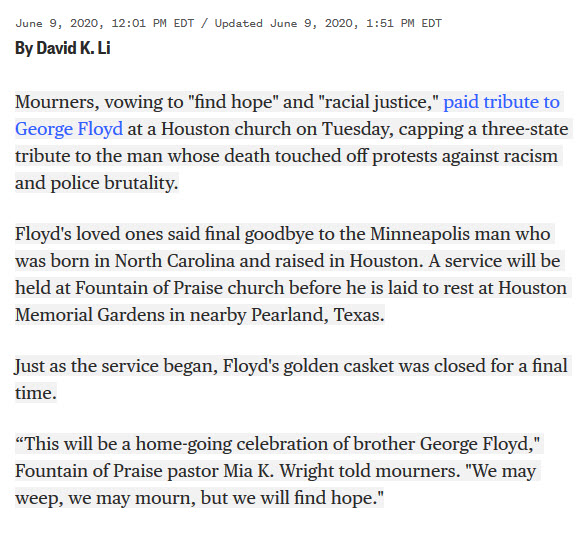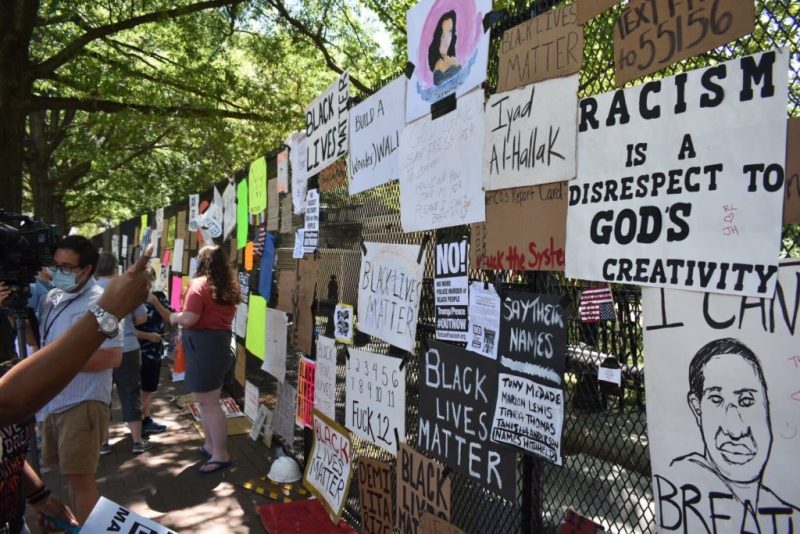Category:Social Justice
The road to social justice is a long, arduous journey, a path that is in no way for those who are unable or unwilling to face adversity and the pain of change.
Let us, here as a movement rises again, look to a 2019 book that deeply examines the fight for social justice in the United States.
The Second Founding: How the Civil War and Reconstruction Remade the Constitution
by Eric Foner
“A history of the Civil War amendments chronicles a revolution in law and moral sensibility.”
- David W. Blight, Yale University, author of the Pulitzer prize–winning Frederick Douglass: Prophet of Freedom
“How are voter suppression, mass incarceration, and jeopardy to the American-born children of undocumented immigrants possible in the land of the free? Eric Foner brings his masterful knowledge of Reconstruction to illuminate the transformative constitutional amendments following the Civil War, and powerfully conveys the ongoing struggles over their meaning.”
- Martha Minow, 300th Anniversary University Professor, Harvard University, author of In Brown’s Wake: Legacies of America’s Educational Landmark
About the Author
Eric Foner is the author of many award-winning books on the Civil War and Reconstruction, including 'The Fiery Trial: Abraham Lincoln and American Slavery', winner of the Pulitzer Prize. He is Professor Emeritus of History at Columbia University.
Reader Review, History that is timely and essential to know
We shouldn’t forget that the original United States Constitution, for all its brilliance, did explicitly condone the practice of slavery. For example, the “three-fifths compromise” counted slaves as three-fifths of a person for the purpose of calculating state representation in Congress, while Article 1, Section 9, Clause 1 prohibited Congress from passing laws banning slavery until 1808. Additionally, Article 4, Section 2 states, in essence, that escaped slaves must be returned to their owners in the original state from which they fled.
In other words, the Constitution was far from perfect (luckily, it allowed for its own modification). And that’s why many historians consider the “second founding” during the Reconstruction era to be of equal or greater significance than the founding itself. The Reconstruction era that followed the Civil War saw the passage of three amendments that would forever transform politics in the US, both in terms of civil rights and in the balance of power between the federal government and the states.
In “The Second Founding,” historian and Reconstruction expert Eric Foner tells the story of how these three amendments—the thirteenth, fourteenth, and fifteenth—together represent the foundation for the continuing struggle for universal rights. The abolition of slavery, birthright citizenship, equal protection under the laws, universal suffrage, and the Incorporation Doctrine (which forces the states to honor the Bill of Rights) are all the direct or indirect result of these three crucial amendments. And yet the “second founding” remains less well-known among the public than the first.
This book is the remedy for that gap in public knowledge, and is invaluable for understanding not only the Reconstruction era but also the subsequent civil rights movements and the modern conservative attack on equality. Foner shows, for example, how talk of “state rights” has almost always been a cover for blatant discrimination. “State rights” has variously meant the right to enslave, the right to deny the vote to blacks and women, the right to violate the Bill of Rights, and the right to discriminate based on race and gender. As Foner wrote, “Before the war, for example, southern states adopted laws making criticism of slavery a crime without violating the First Amendment since these were state laws and not acts of Congress.” The real danger, in terms of rights violations, has always been greater within the individual states.
This book can also act as a good inoculant against conservative rhetoric that hasn’t changed in at least 156 years. The reader will be amused to find the same state’s rights and reverse discrimination arguments throughout the book. Andrew Johnson, for example, in his opposition to the fourteenth amendment, said, “The distinction of race and color is by the bill made to operate in favor of the colored against the white race.” As Foner wrote, “In the idea that expanding the rights of nonwhites somehow punishes the white majority, the ghost of Andrew Johnson still haunts our discussions of race.”
The underlying message of the book seems to be that any rights granted by the Constitution are worthless if not enforced. Constitutional rights can be ignored, distorted, or narrowly interpreted to deprive certain groups of equal protection and treatment under the law. But if we can’t even recognize when this is happening—and we don’t properly understand what the second founding was trying to accomplish—then we are all powerless to prevent a regression to discriminatory politics under the guise of “state’s rights,” “originalism,” and all the rest.
~
Global, National, Local and Personal
Nation by nation, social justice is an ongoing struggle for liberties and rights, respect and understanding
In the United States from the beginning of the nation and passage of the US Constitution with its Bill of Rights, we have witnessed work in progress... in the Courts, in communities, person to person across generations.
GreenPolicy360 speaks of social justice as a global politics. Green politics brings forward a green platform of values and ideas that speak, first and foremost, of a rights agenda. Our GreenPolicy360 focus on rights is a foundation for action. Our belief in an expansive, living rights platform continues -- including civil, human, natural, racial, environmental, indigenous rights...
A foundation of rights, a set of beliefs and values, motivates our action at GreenPolicy360.
Visit actionable GreenPolicy360:
On June 1, 2020, in Washington DC, a peaceful protest was taking place across from the 'White House', the residence of the US president. The protest was part of a nationwide series of events/marches/speeches/gatherings and daily public protests over the tragic death of George Floyd.
The head of the US military, in battle fatigues, chose to accompany the US president across to St John's Church, after protestors were cleared away, enabling the president to conduct what was widely described as a "photo op."
Now, thousands upon thousands, millions of stories are being told and actions taken. Social justice is on peoples minds. It is overdue. It is our common responsibility, each of us, to do what we can to make a positive difference in these times.
·················································
·················································
·················································
The 8 Can't Wait Campaign @ https://8cantwait.org/ has immediate changes that are needed to cut back on the violence in cities across the country. Here are the 8. There are more than 8 needed.
1. Ban chokeholds and strangleholds
2. Require de-escalation
3. Require warning before shooting
4. Require exhausts all alternatives before shooting
5. Duty to intervene
6. Ban shooting at moving vehicles
7. Require use of force continuum
8. Require comprehensive reporting
·················································
Tuesday, June 9, 2020
- ························································································
After the Memorial Service of George Floyd
There's a street in Savannah called River Street. The street is paved and bumpy with paver stones laid there alongside the Savannah River. Few know these days that River Street is slave ship ballast, rocks that slave ships carried in their hold with the slaves. Over the yrs thousands of ships carried European-enslaved Africans, and African rocks -- chert, basalt -- quartz to the Southern city of Savannah, purposefully built on a native American graveyard site by an Englishman named General Oglethorpe.
The Africans had made a stop at Tybee Island, along Lazzaretto Creek, a lazzaretto its called, a quarantine stop. The chained people in the hold were counted, their saleable qualities written in detail on bills of lading and offer, preparing them for sale on River Street.
After they were unloaded, the African men then unloaded the rocks. This gave the slave traders an idea of how they would work in the fields. Then the slaves were chained to metal hooks in stonework along the river. The hooks are still there, tho few know what those rusty hooks in walls alongside River Street in Savannah were for. What people do know is that Savannah is known for being a haunted city. Not just because of all the literature, 'the book' and the movie that came from it, Midnight in the Garden of Good and Evil, and all the hanging moss, the deep humid smells, the whispers in the trees, the talk of spirits roaming still.
My first trip to Savannah told me this was a place where I should be very aware when I walked the streets at night. There are souls wandering still in Savannah. Savannah has lessons to tell us and if we stop and listen, we can hear them.
Stop and Listen
An old friend who used to edit at Roll Call and E&E Environment & Energy sent this to me. A June 9th editorial from his new venture, Maryland Matters.
Maryland does matter, as does its history, up the coast a bit from Georgia and split by pre Civil War Mason-Dixon line. The Province of Maryland saw the slavery line became a reality in 1767. Stones were placed every mile to mark the line between free and slave. Many of these original stones, rocks in the ground where on one side one could be free, in a manner of speaking, and on the other side, one could be owned and enslaved.
Let's look closer at the 'free' side in Maryland. Josh Kurtz and Maryland Matter lays it out for us. It's in the law, law and order of that time with the echoes still with us.
Read it slow, stop and listen to the voices:
Tucked between an early wrongful death statute titled “Negligence” and an article governing “Notaries Public,” sits Article 66 of the Maryland Code of 1860. Titled “Negroes,” Article 66 lays out the laws governing black life in the state of Maryland on the eve of the American Civil War across approximately 20 pages.
It is an example of one American state’s most fully formed corpus of law on the Black body. It is also an example of the American legal tradition of sanctioning and incentivizing the killing of black men by white citizens and law enforcement, a legacy reverberating in the recent murders of Ahmaud Arbery and George Floyd.
At the core of Article 66 is the impossibility of Black personhood, and this impossibility is achieved, in large part, by establishing a system of White control over the Black body. The article begins with the pronouncement that “Negroes have been held in slavery” in Maryland from its earliest settlement, and that “every owner of such negro is entitled to his service and labor for the life of such negro.” (Article 66, sec. 1).
This makes clear that there is no distinction between slave and Black person (“negro”), and that the power of Whites over Black bodies is perpetual. Later in the document (sec. 42), Article 66 prohibits the freeing of slaves by deed or last will and testament, meaning slaves could not be freed upon the death of their owner. This helped preserve the legal identity of the slave as property rather than person.
It is clear from Article 66 that this legal identity imposed on the Black body was enforced by conscripting White citizens into its enforcement. For example, section 47 required “All sheriffs and constables,” who then would have been White, to arrest any free Black person in the State from outside of Maryland, who were not allowed to enter the state (sec. 44).
But Article 66 also extended that same power to “all other [White] persons” who were also “authorized to arrest any such free negro” (sec. 47). White persons were not only authorized to arrest any free Black person from outside the state, they were entitled to half the $500 fine (in 1860) in the instance they arrested a free Black person for illegally entering Maryland a second time (sec. 44).
Thus, White persons were not only endowed with absolute authority over the bodies of “free” Black persons from outside Maryland, they were economically incentivized to exercise that authority and make White power over the Black body real. This economic incentivizing of the exercise of White power over the Black body is found throughout Article 66. (E.g., sec. 9, 46, 67-68, 70, 73).
Article 66 also encouraged White violence (read: use of force) against Black persons. For example, sec. 72 of Article 66 prohibited free Blacks from owning dogs without a permit, and the permit had to be renewed annually. The same section also authorizes “any person [to] kill any dog kept contrary to this section.”
In other words, any White person, upon the expiration of a Black person’s dog permit, had the legal right to kill that dog solely on that account. This is nothing other than the codification of an act of wanton cruelty against Black persons and families.
The greatest incitement to violence, however, rests in sections 3-11. Section 3 states that, “Any person may arrest any runaway negro, and carry him before a judge or justice.” Further, anyone attempting to do so was granted immunity for any use of force employed in the attempt:
“If any runaway slave shall resist the person who attempts to arrest him, and such slave happens to be slain for refusing to surrender himself, such killing shall be deemed justifiable; and any slave so killed shall be paid for by the State.” (sec. 11).
No other provision of Article 66 better contextualizes the rage currently being felt over the deaths of Black men at the hands of the State and their agents, many often White. How often has “resisting arrest” been used as a justification to murder a Black person? Here is its provenance in American law.
How often have we heard that the killing of a human being was justifiable because she resisted arrest? Here is its provenance in American law.
The Statues 'Honoring the Confederacy'
The memories from the past flow past us, a river of time in the South, the land of the 'Confederacy', the war to keep slavery a fact.
Here in Florida, where your writer resides, the ghosts of the past live in the present. Today, Confederate flags can be seen daily. Driving down the roads are Dixie flags in truck beds and rear windows, often displayed, if the words are said out in the open, by folks who believe still in 'the cause', the Southern cause in the Civil War.
Here in Florida, next to Georgia, not far from Savannah, the memories of slavery remain embedded in the land. Stone monuments to rebel troops, leaders and battlegrounds with places of 'honor' in our cities. Slavery's vestiges are still venerated, displayed and given salutes by some. But this is changing. The flow of time is bringing change, a new era even as those who honor the old ways call for another hurrah, another rebel yell.
But yesterday, June 9th, 2020, the tallest, historic Confederate monument was removed in the dark of night in Florida's largest city -- Jacksonville.
It happened in Hemming Plaza in the center of Jacksonville, the city named after the slayer of Indians, the seventh president of the United States known for slaughtering and removing the Native American tribes remaining in the South and marching them to reservations beyond the Mississippi River.
Andrew Jackson was celebrated for opening up 25 million acres of native peoples land to white settlement, in violation of treaties but there is was -- a slaughter in the name of 'civilization'. Their skin was dark, they had to go. They were 'savages'. They were hated. The Indian wars and white man plagues wiped out millions of the original people. Andrew Jackson led the troops against the Creek tribe. "We shot them like dogs," Davy Crockett is reported as saying in the news reports.
Three tribes had 21 million acres taken by Jackson who proclaimed to the US Congress, “They have neither the intelligence, the industry, the moral habits, nor the desire of improvement which are essential to any favorable change in their condition. Established in the midst of another and a superior race…they must necessarily yield to the force of circumstances and ere [before] long disappear.”
The U.S. Army removed 60,000 Indians. The removal and forced march was known as the “Trail of Tears.”
Today, in Andrew Jackson's city, Jacksonville, questions are being asked about how far the mayor who ordered the removal of the towering Hemming granite stone monument to the war for slavery.
What about the other Confederate monuments? Will they be removed too from their places 'of honor' in parks and be removed to museums and places where they will be regarded as historical artifacts with lessons to be learned about American past.
Or will the Jacksonville mayor go another way?
Today it was announced that Jacksonville looks to be the chosen site of the 2020 Republican convention. The US president decided, it's now being reported, that Florida is in, North Carolina is out. The long-planned convention in the Carolinas is being pulled as the North Carolina Governor was unwilling to give the president a demanded full-audience, no restrictions event in contravention to public health care experts warning against the spread of the Coronavirus, Covid-19.
And so it goes.
It used to be said that the powerful, the victors in war, write the history. To an extent, this has been shown to be true over the decades and centuries past.
Yet, there is another river of time, a River Street on which we are all traveling. It flows with its own force, it is a powerful force, moving, rippling, creating waves, eddies, currents.
The dynamic is happening here, today, with George Floyd, with the people rising up and saying 'let us breathe'. These are new times on River Street. We remember the old times. And we're learning.
~
GreenPolicy360
June 10, 2020
··············································
Saturday, June 6, 2020
Hundreds of thousands of people across the United States—and, in stunning displays of solidarity, around the world—poured into the streets Saturday demanding an end to police brutality and racial injustice in the largest day of demonstrations since the killing of George Floyd at the hands of Minneapolis officers last week.
Enormous and diverse crowds of demonstrators marched in the streets of Washington, D.C., Philadelphia, Chicago, and other major cities in a striking display of non-violent mass action. Participants in the historic demonstrations voiced hope that the remarkable energy behind the protests can be transformed into a sustained movement for change. (Via Common Dreams)
····················································································································
The Wars Come Home: Dissent and Discord in the US
Nationwide Demonstrations, a President's Threats
Washington Post / June 3 / Pentagon chief says he does not support the use of active-duty military forces to quell unrest, breaking with Trump
Repurposed from the Battlefields, Transferred to US Law Enforcement Agencies
Morning After Screenshots from DC / On June 2, 2020
········································
June 1 / 'The Photo Op' / An Update & Apology
‘I should not have been there,’ Gen. Milley says of Trump photo op.
The country’s top military official apologized on Thursday for taking part in President Trump’s walk across Lafayette Square for a photo op after authorities used tear gas and rubber bullets to clear the area of peaceful protesters.
“I should not have been there,” Gen. Mark A. Milley, the chairman of the Joint Chiefs of Staff, said in a prerecorded video commencement address to National Defense University, reports Helene Cooper. “My presence in that moment and in that environment created a perception of the military involved in domestic politics.”
······································
• #SocialJustice #EconomicJustice #ClimateJustice •
Social Justice • Economic Justice • Environmental Justice • Racial Justice
Social Justice Warriors • Grassroots Activism
Health Care • Public Health • Right to Health Care
Public Education • Rights to Equal Education
Human Rights • Womens Rights • Civil Rights • Voting Rights • Indigenous Peoples Rights
Community Justice • Policing Reform
Access to Justice • Affirmative Action • Equal Employment Opportunity • Worker Rights, Labor Laws
Eco-nomics • Sustainable Economics
Environmental Protection • Action on Climate Change - Global Warming
Human Need Programs to Deal with Hunger and Food Insecurity
LGBTQ+ Rights • Minority Legal Rights
Disability Rights - Elderly Care • Addressing Ageism
Migrants • Refugee Crisis • International Programs - Diplomacy
Prison Industrialization Reform
Prevention of Gun Violence
Veterans Health Programs • PTSD • Post War Care
~
Subcategories
This category has the following 10 subcategories, out of 10 total.
A
E
P
V
W
Pages in category "Social Justice"
The following 66 pages are in this category, out of 66 total.
C
E
- Eco-economic Decoupling
- Eco-nomics
- Environmental full-cost accounting
- Environmental Justice
- Environmental Law, Rollbacks under Trump 2016-20
- Environmental Laws and Modern Environmental Movement
- Environmental movement
- Environmental Protection Agency
- ESA Living Planet Announcement - May 2022
- European Union Green Deal - Fit for 55
G
- GDP+
- Generation Green
- Glasgow Climate Summit - Pledges, Promises, Declarations - What's Next Up
- Going Green
- Google Earth Timelapse
- Green Bank in Maryland - and More
- Green Futurist Literary Writers
- Green Institute
- Green New Deal
- Green Party
- Green Politics 360
- Green Quotes
- Green Stories of the Day
- Green Stories of the Day - GreenPolicy360 Archive
- GreenLinks
- GreenPolicy360 Archive Highlights 2013
- GreenPolicy360 Archive Highlights 2014
- GreenPolicy360 Archive Highlights 2015
- GreenPolicy360 Archive Highlights 2016
- GreenPolicy360 Archive Highlights 2017
- GreenPolicy360 Archive Highlights 2018
- GreenPolicy360 Archive Highlights 2019
- GreenPolicy360 Archive Highlights 2020
- GreenPolicy360 Archive Highlights 2023
Media in category "Social Justice"
The following 7 files are in this category, out of 418 total.
(previous page) (next page)- Who really invented the climate stripes - Climate Change Education.png 600 × 600; 234 KB
- Whole Earth Catalog-Internet Archive-4-23-2021.jpg 592 × 305; 48 KB
- Winning on the climate legis - AOC.png 480 × 519; 249 KB
- WV v EPA SCOTUS poll - June 27 2022 before court decision.png 623 × 480; 126 KB
- Your life is your message.jpg 468 × 640; 66 KB
- Youth Climate Movement.jpg 516 × 284; 79 KB
- Zack Labe - climate viz - June 2024.png 675 × 600; 261 KB
- Affordable Housing
- City Governments
- City-County Governments
- Civil Liberties
- Civil Rights
- Climate Change
- Disability Issues
- Economic Development
- Eco-nomics
- Elder Issues
- Election System Reform
- Education
- Green Politics
- Green Values
- Housing
- Human Rights
- Labor Issues
- New Economy
- Peace
- Planet Citizens
- Resilience
- Strategic Demands
- US
- Voting Systems
- Whole Earth
- Women's Issues
- Women's Rights
- Women and Gender
- Workers Rights
- Youth












